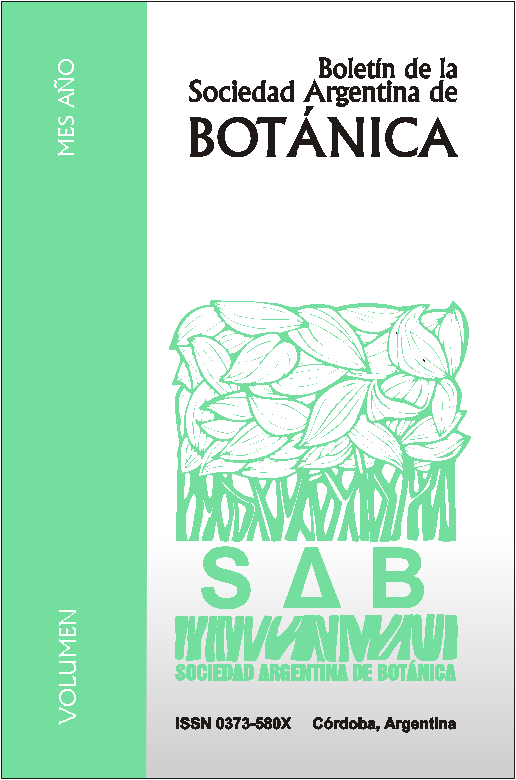Characterization and phenology of species with beekeping interest in the Diamante department (Entre Ríos, Argentina).
DOI:
https://doi.org/10.31055/1851.2372.v51.n2.14837Keywords:
Flowering phenology, bee resources, southwest region of Entre RíosAbstract
Characterization and phenology of species with beekeping interest in the Diamante department (Entre Ríos, Argentina). In order to evaluate the bee resources in southwestern region of the province of Entre Rios based on diversity and abundance, spatial and temporal availability of the same, with the purpose to facilitate the planning of beekeeping and compare with the resources exploited by Apis mellifera L., vegetation was surveyed in the area of influence of three apiaries. During the 1999-2001 seasons bee bloom 299 Angiospermae was recorded and coverage was determined in different environments. The botany families with beekeping interest with greater diversity of species were Asteraceae and Fabaceae. The flowering period is extended throughout the year around, with a maximum between mid-October to February. The more relevant in the supply of flowering plant
families were Asteraceae, Fabaceae, Apiaceae and Brassicaceae. Tree species make their contribution particularly early in the season, being largely overcome from September forward by herbaceous. The
beekeeping resource sector land, it is mainly represented by exotic herbs (e.g. Glycine max, Melilotus albus, Medicago sativa, Lotus corniculatus, Brassica campestris, Ammi and Carduus species) and in
the coastal sector and islands by aquatic and marsh native species, either herbaceous (e.g. Sagittaria montevidensis, Polygonum and Eichhornia species) as arboreal (e.g. Salix humboldtiana and Tessaria
integrifolia). The wetland species permit to extend the beekeeping period to early autumn.
Downloads
Published
Issue
Section
License
Provides immediate and free OPEN ACCESS to its content under the principle of making research freely available to the public, which fosters a greater exchange of global knowledge, allowing authors to maintain their copyright without restrictions.
Material published in Bol. Soc. Argent. Bot. is distributed under a Creative Commons Attribution-NonCommercial-ShareAlike 4.0 International license.





